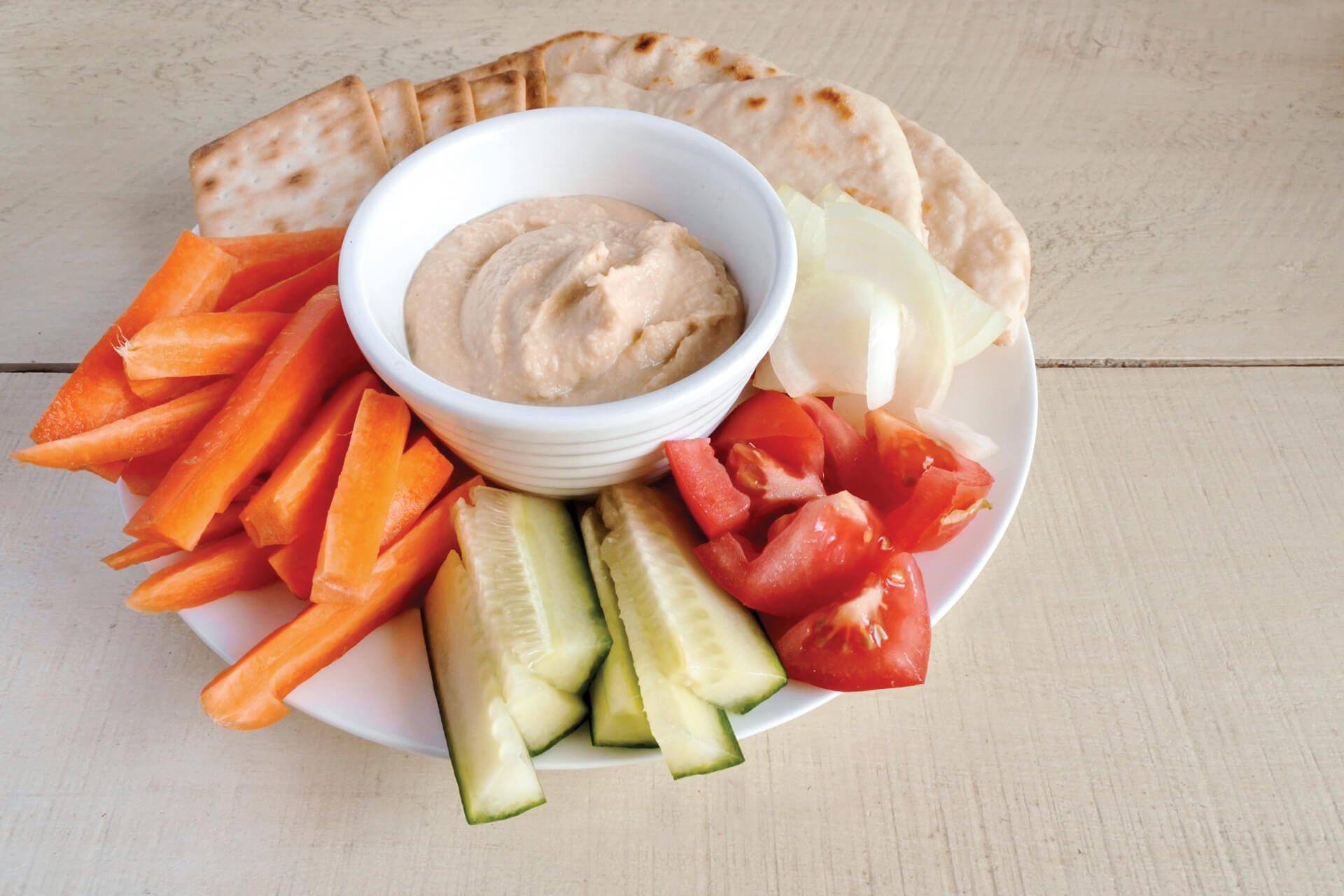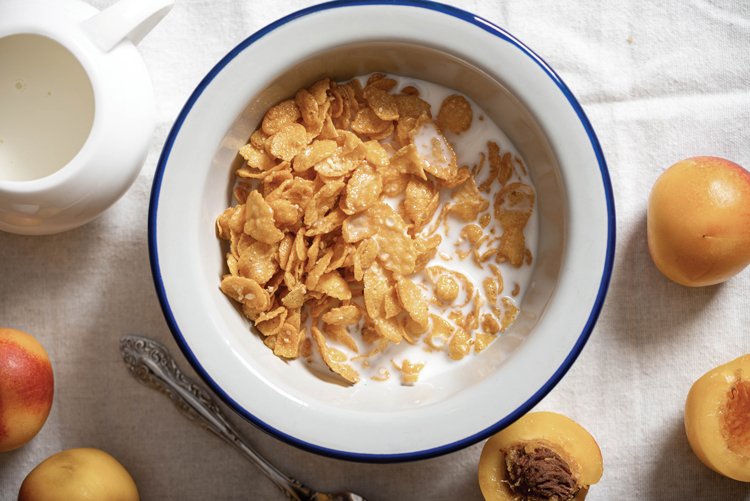
Trucos y consejos para sumar calorías a las comidas de los niños
Bridget Swinney MS, RDN, LD
- Home
- Live Well Blog
- Trucos y consejos para sumar calorías a las comidas de los niños
Bridget Swinney MS, RDN, LD

¡En algunos casos, los niños crecen tan rápido que resulta difícil que coman lo suficiente!
Eso es lo que le ocurrió a la hija de Kati, Isabella, cuyo médico le recomendó que consumiera comidas más calóricas. Kati le pidió ayuda a su nutricionista de WIC. Estos son los consejos que le dio para que Isabella consumiera más calorías:
- Ofrécele comidas y bocadillos con frecuencia.
- Anímala a que ayude a preparar las comidas y los bocadillos; será más probable que los coma si participa en el proceso.
- Evita que consuma alimentos altos en azúcar y bebidas azucaradas entre las comidas porque quitan el apetito.
- Utiliza leche y yogur enteros en lugar de las opciones bajas en grasa o descremadas.
- Si tiene sed antes de las comidas, ofrécele solo agua para que no se llene con otras bebidas.
Formas sencillas de sumar calorías
Añadir grasas saludables a la dieta de los niños es la forma más sencilla de sumar calorías.
- Utiliza más cantidad de aceite cuando cocines o añade más aceite, manteca o margarina a las patatas, la salsa para pasta, la pasta y a los vegetales cuando ya están cocidos.
- Añade aguacate a los sándwiches, las salsas, las ensaladas de huevo duro o a los batidos.
- Utiliza más mayonesa para los sándwiches, el pollo o las ensaladas de atún. Prepara una "salsa especial" con un poco de kétchup para aderezar el pollo o las patatas fritas. Prepara una salsa tártara con mayonesa y pepinillos en conserva para aderezar palitos de pescado.
- Unta una capa fina de mantequilla de frutos secos* en tostadas, galletas saladas o en rebanadas de fruta. También puedes utilizar la mantequilla de frutos secos para aportar sabor y más calorías a los batidos, al igual que avena.
* ADVERTENCIA: la mantequilla de frutos secos, sobre todo la que viene con trozos, puede representar un peligro de asfixia para niños menores de 4 años. No ofrezca cucharadas de mantequilla de maní a los niños. La mantequilla de frutos secos puede aligerarse con compota de manzana para que sea más fácil de comer.
- Prepara humus con habichuelas o garbanzos, limón, aceite y ajo.



- La leche es un alimento WIC supersaludable que puedes utilizar de formas diferentes. Elige leche entera solo si el pequeño necesita sumar calorías o si tiene entre 1 y 2 años. Limita la cantidad de leche a 2 tazas al día.
- Sirve leche con las comidas o con el cereal.
- Utiliza leche para preparar cereal caliente, pudines, macarrones con queso, puré de patata y batidos.
- Prepara sopas cremosas enlatadas o caseras.
- El yogur es una buena manera de sumar calorías y calcio, sobre todo si al pequeño no le agrada demasiado la leche.
- Mézclalo con fruta congelada para preparar un delicioso batido.
- Prepara un postre parfait con frutas y un poco de cereal crujiente WIC por encima.
- Congela yogur con trozos de fruta en vasitos para tener listos unos postrecitos helados.
- Mezcla yogur con fruta y jalea para utilizar como aderezo en panqueques y gofres.
- Prepara avena remojada de la noche a la mañana con leche, yogur y fruta.


- ¡El queso es un alimento sin lactosa que puedes utilizar de formas diferentes!
- Corta rebanadas y combínalas con rodajas de manzana o pera o con galletas saladas.
- Añade una lluvia de queso rallado al brócoli, la coliflor, las patatas o a otros vegetales.
- Añade una cantidad adicional de queso a los macarrones con queso o al puré de patata.
- Prepara quesadillas con queso o sándwiches de queso fundido.
- Añade queso a cualquier tipo de sándwich.
- Añade una lluvia de queso rallado a la pasta, el pastel de carne, el chili y a los guisados.
- Prepara nachos con puré de habichuelas y queso.
- Crema y crema ácida
- Puedes añadir crema o crema agria a los vegetales, como los de hoja verde y las patatas, y también a la pasta.
- Se puede añadir a la leche baja en grasa unas cucharadas de crema espesa o partes iguales de leche y crema.
- Prepara una "patata cargadita" con queso, crema agria y jamón picado.
- Prepara una salsa con crema agria y una mezcla de salsa ranchera o condimento para tacos.
- Añade crema agria a los tacos, las enchiladas y a los nachos.

Menú de ejemplo
Desayuno
Avena remojada durante la noche con yogur griego y leche entera, plátano triturado y canela.
½ taza de leche entera.
CONSEJO: prepara la cantidad necesaria para varios días en frascos de vidrio, de manera que sea fácil de tomar y llevar.
Bocadillo
Rebanadas de queso con galletas saladas integrales.
½ taza de jugo.
Almuerzo
Tostada o taco pequeño con habichuelas y aguacate
Rebanada de melón
Leche entera
Bocadillo
Zanahorias frías cocidas al vapor con salsa ranchera
Agua
Cena
Palitos de pescado o tiras de pollo con salsa tártara (mayonesa + pepinillos en conserva) o salsa especial (mayonesa + kétchup)
Pasta con una cantidad adicional de manteca
Espinaca con crema ácida
½ taza de leche entera
Bocadillo
Pudín preparado con leche entera